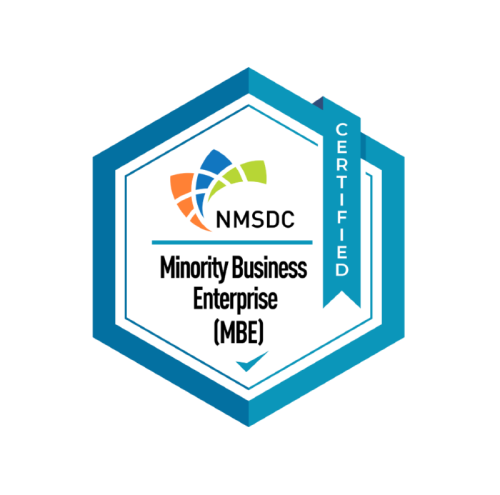Many companies already use the cloud today to some degree without even knowing it. This is usually in the form of SaaS applications like accounting and CRM software. You might consider making the leap and fully migrating your services to cloud platforms after seeing the potential business gains from the move.
However, you may not fully realize your plans if you fall into one of the cloud migration mistakes. Even though a move to the cloud can be incredibly beneficial to your business, many cloud migrations fail due to insufficient knowledge before the action.
Nobody wants to have a failed cloud migration project. So, to get ahead of that and protect your organization, check out some of the biggest pitfalls of cloud migration and how you can avoid them.
5 Biggest Pitfalls of Cloud Migration and How to Avoid Them
1. Selecting The Wrong Migration Approach and Time
Even though many organizations know they want to move to the cloud, a confusing aspect for many of them is knowing the right way or time to do so. Many companies do not spend a lot of time studying many migration types and checking the potential pitfalls of each.
Also, timing cloud migration is just as important as making a move itself. You don’t want to make a move when your business needs are increasing or when you’re at a critical point for your business. Many factors, such as the type of infrastructure and workloads, could affect the time it takes to migrate to the cloud, so you don’t want to choose the wrong time to start.
If your organization is exploring cloud-based business systems, this article on the benefits of ERP software on the cloud offers a practical look at how SaaS platforms can improve performance, security, and scalability.
How To Avoid This
Every migration plan is different and coming up with a migration plan is typically on a case-by-case basis. It is always a good idea to consult with a cloud solutions provider or a cloud architect to understand your present infrastructure before making a plan for the move.
Physical servers take about three years to depreciate and are always an excellent point to consider when planning your cloud move. It is typically ideal for planning a migration when you need to change hardware and when your operations aren’t critical.
2. Assuming Your IT Team/Staff Have the Required Skills
Even though many cloud services are predesigned for easy use and integration, it doesn’t mean your team can add the benefits and start using them without the proper skills. Lack of adequate skills is one of the reasons why many cloud migration projects can take as much as two years, and some experience several delays in adoption and implementation.
While some organizations may use a lift and shift method for a cloud migration project, it is only temporary. Lift and shift methods do not develop cloud-native skills in an organization needed for the long-term use and transition. Also, cloud transition means there will be an increased demand for new tools and new adaptations to the existing processes, which requires skill.
How To Avoid This
It would be best to dedicate enough time and effort to training which will be beneficial in the long run along your cloud journey. Set out to create a training plan and decide which types or aspects of training are necessary for your employees based on the organization’s need and their role designations. Employees will respond better and positively when you give them clear training expectations before the start.
Some companies feel that hiring qualified cloud experienced partners or personnel is more cost-effective than upskilling their present employees. Getting new hires will result in a high cost, and the current employees will still need training on the latest tools and services, so it is better to provide skills training. This helps with tools to streamline, simplify and easily automate your training paths.
3. Moving Workloads Without Prioritizing
Learning about the benefits of cloud computing can be very exciting, which may rush your team to undertake cloud projects or even plan a complete move. A rushed move to the cloud can have adverse effects on your workloads and costs. Even with its many benefits, the cloud costs can quickly rack up and even become more than the financial benefits.
Many organizations often try to do too much on their first contact with the cloud environment without knowing the devastating consequences on their business.
How to Avoid This
It is essential to start every cloud migration by first defining your use cases, cost modeling, and proper data collection. It is advisable not to move all your data at once to the cloud, even if you are planning a complete migration. Depending on the size of your workloads, a migration strategy can last up to a year.
Another reason for prioritization is that there might be some legal challenges you need to straighten out, such as team member communication, lease agreements, sensitive data, and establishing new systems. All organization members must have a complete understanding of the aim with clear business outcomes and success criteria.
4. Replicating Your On-Premises Environment
Many people have found that one of the fastest ways to migrate to the cloud is using the lift and shift cloud strategy. While it is a quick way to expedite the migration and get your workloads running, it isn’t ideal for most scenarios.
It may work for some organizations after some fine-tuning, while it may be disastrous to others. Also, just because the system and workloads worked for an organization does not mean that they’ve succeeded in optimizing their costs. Many of them may encounter problems in the far future when it is too late to move back on-prem or find out they are spending more with a cloud infrastructure.
How to Avoid This
A cloud migration strategy often includes configuration changes, monitoring, and security even after getting the most optimal architecture for workloads. Even if you’ve found that a lift and shift approach is the best for your organization, you should still tailor your cloud environment to your application requirements to avoid common pitfalls.
Also, a good practice is deciding what applications you need to migrate and the ones you have to replace. Sometimes an organization may have become too reliant on a particular software, and moving from it could do more harm than good. You might have to stop using that system and embrace the cloud model entirely in some other cases.
5. Neglecting Security
While you’re overly focused on the workloads and applications, you can forget about the cloud platform’s security you want to move in. Security is very tricky to manage because it is typically very late before you realize you have security issues, and it may be too late to solve.
Many organizations are vulnerable because they don’t transition their IT processes but only transfer their workloads. Security gaps in the cloud are invisible, and your team can easily neglect them in their move to the cloud. If you don’t consider security in your planning, it could adversely affect cloud savings in the long term.
How to Avoid This
Before kickstarting any cloud project, you should examine all the security concerns to avoid the wrong migration approach. Even if you aren’t in a highly regulated industry, it is crucial to evaluate all the security paths before kickstarting a project carefully.
Defining your security objectives beforehand can help you make choices that account for long-term business resilience. Understand that security is a joint responsibility, not just for the cloud services provider. Confirm the access management tools available in each and if automated threat detection systems are available.
Conclusion
There are other cloud migration pitfalls apart from the ones on this list that can have devastating consequences to your organization. However, if you follow all the solutions in the “How to avoid this” sections as discussed above, you shouldn’t encounter them. Overall, proper planning and making adequate research before making your cloud move is the surest way to avoid any pitfalls.

Vikas Sharma
Integration Architect and Integration Practice Lead Sage IT










